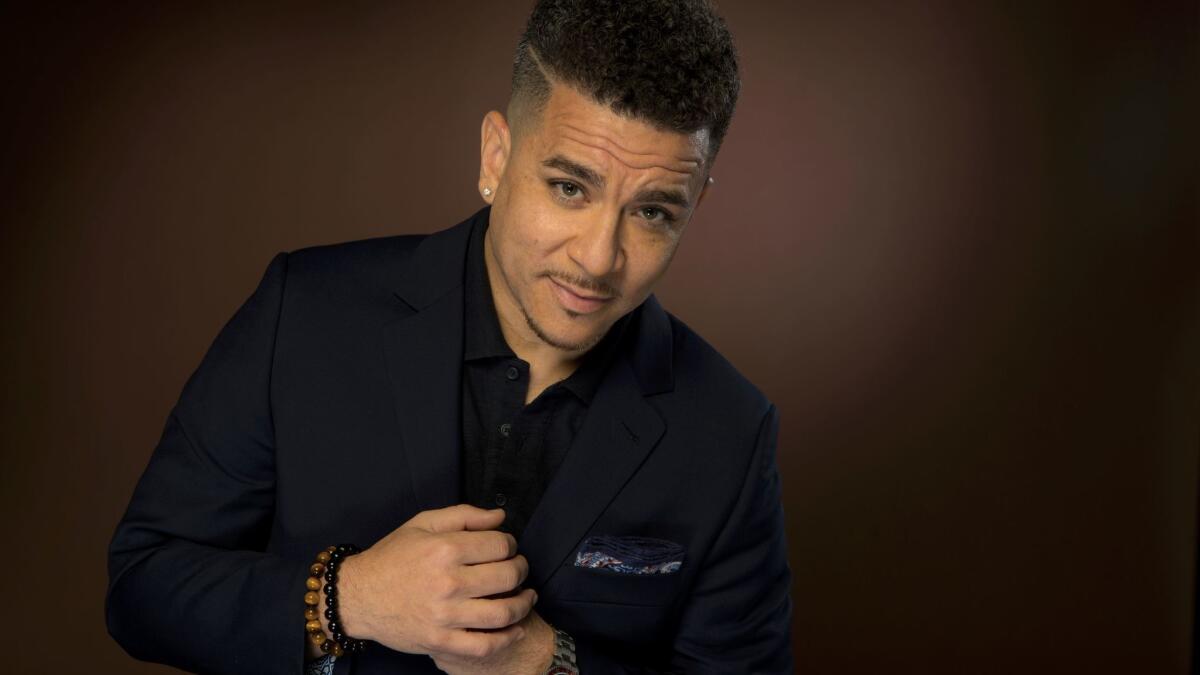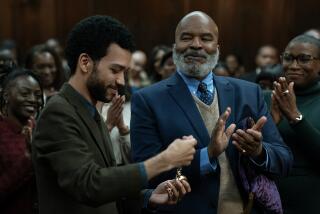Risky ‘Mudbound’ was a responsibility writer Virgil Williams couldn’t turn down

It’s been almost eight years since Hilary Jordan’s “Mudbound” first found me. That’s what it felt like — it found me.
It read like an instant classic for this generation. Written in a revolving point of view, it focuses on six characters — three black and three white — and each chapter belongs to one of them. So, in some ways, it mimics our Twitter-feed-world and it leaves you addicted, always wanting more. But underneath the shifting viewpoint, the story marches on, like time itself — an inescapable reality to which, in the end, you can only surrender.
And it felt like God herself had reached down and handed me my orders and it was my responsibility to adapt this story into a film. But there were risks. This was before movies like “12 Years a Slave” made a real impact and it seemed the world just wasn’t ready for this story. I was warned: Period pieces don’t sell. And Jim Crow terrifies people. Can you blame them? But it had to be done. Because “Mudbound” is me. “Mudbound” is all of us. Because it’s pure America. The best and worst of it.

Director Dee Rees talks about casting Mary J. Blige, Carey Mulligan and Jason Mitchell for her film “Mudbound.” After loving Mitchell’s performance in “Straight Outta Compton,” Rees said, “I’d be so lucky to get him in my film.”
WATCH: Video Q&A’s from this season’s hottest contenders »
Race and identity themes have played like a steady bass line in the song of my life. I’m African American and Puerto Rican, and I grew up around wealthy white kids in the notoriously segregated city of Chicago. But the only Spanish I know I learned waiting tables. My mom, who accounts for my Latin blood, is adopted and the only reason we even know I’m Puerto Rican is because of a DNA test.
I identify as black. My father is black. And my mother’s adopted parents were bi-racial black people. So bi-racial that in World War II my grandfather’s brother fought in a white unit because he could pass. My grandfather claimed Negro not out of some sense of racial pride, but because he thought they would never send black soldiers into combat. He was wrong.
The first time I truly knew I was “other” was when I was 9. An older friend had sneaked into his parents’ liquor cabinet and we took him into an alley to vomit. It wasn’t long before a cop car rolled up hard and fast. My first instinct was to run. But then I heard, “Stop or I’ll shoot,” and fear froze me. And the Chicago policeman who ran up smacked me to the ground, called me a slanty-eyed little ’spic and threatened to throw me into a Dumpster.
The irony was that after my grandfather came back from World War II, he became a Chicago cop and worked his way up to homicide detective. He warned me about the world and its cruelties.
I can remember him telling me, “It’s nobody’s business what you are.” In other words, nobody needs to know you’re black. This was a man who must have paid dearly for his mixed blood. And he was trying to save me that cost.
Imagine how confused I was trying to reconcile that advice with the daily influence of my own father, a proud black physician who grew up in the ‘60s. I’ve grown older and become a father myself and it’s gotten no less confusing.
In the span of my life, I have had more than one white person proudly declare that I’m not really black. I have also had more than one white person call me the “N-word.”
Among black people I am generally accepted. But I have been both venerated and vilified because of my light skin and eyes. My grandfather called this the “Is you is or is you ain’t?” He actually had a phrase for it so prevalent a phenomena it was in his life.
FULL COVERAGE: Sundance Film Festival 2018 »
Ironically, most issues of race are anything but black and white. They swirl in the turbulent reality of gray. And that’s where “Mudbound” lives. The heartbeat of the story is about a friendship between two soldiers. One is black. One is white. And both are heroes. And in the Jim Crow Mississippi Delta their friendship is forbidden. Though they both fought under the same flag in the name of freedom, sadly, when they come home neither one of them is truly free. So they keep fighting.
I was driven to adapt ‘Mudbound’ because it felt necessary...in this era of bigotry and misogyny where the ‘very fine people’ of the KKK march unmasked.
I was driven to adapt “Mudbound” because it felt necessary. Especially now, in this second civil rights movement, this era of unabashed bigotry and misogyny where the “very fine people” of the KKK march unmasked.
So it’s fitting that it took a rainbow of talented artists, mostly women I might add, to bring “Mudbound” to life. But one in particular stands out, a true visionary and the tip of our spear — Dee Rees. As a fierce, openly gay, black woman her mere presence in this business is an inspiration. But it’s her rare combination of skill and will that sets her apart. Oh, and by the way, she shot the film in less than a month — and created art.
And like any good piece of art, this story makes you think and feel because it’s honest. Honest in its portrayal of who we were. Which means it also shows us who we are. And in doing so, maybe it’ll help us figure out who we will be.
“Mudbound” tells us that no matter what color, creed, gender or faith, we are all trapped here together in the same mud. The mud of fear, hate and ignorance. And the only way to fight our way out? With love.
More to Read
From the Oscars to the Emmys.
Get the Envelope newsletter for exclusive awards season coverage, behind-the-scenes stories from the Envelope podcast and columnist Glenn Whipp’s must-read analysis.
You may occasionally receive promotional content from the Los Angeles Times.






